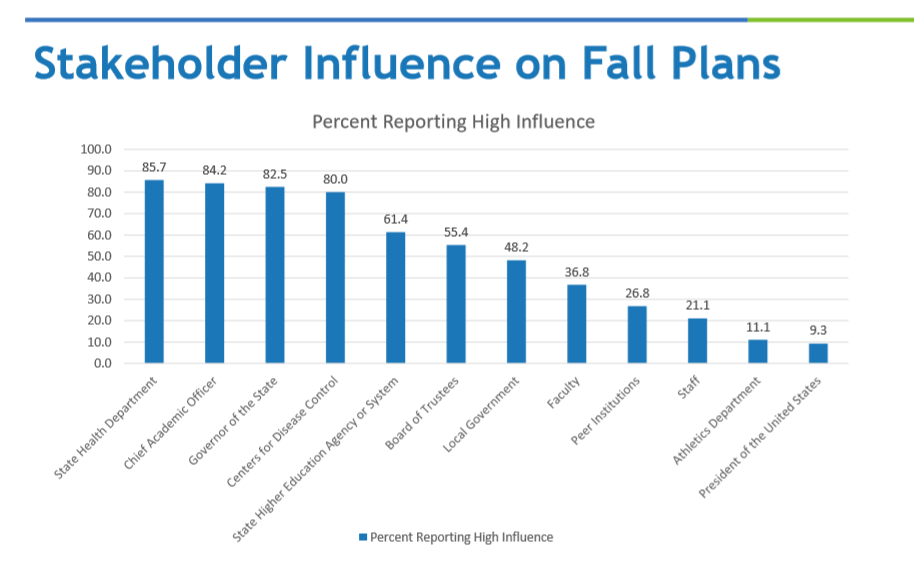Advertisement
On Politics With Lisa Lerer
His poll numbers look good. His opponent’s strategy seems disjointed. (But also, it’s June.)
Hi. Welcome to On Politics, your guide to the day in national politics. I’m Lisa Lerer, your host.
Sign up here to get On Politics in your inbox every weekday.

If the election were tomorrow, Joe Biden would be well positioned to win.
He’s leading the latest national polls, in many cases by double-digit margins. Since the spring, Mr. Biden’s national advantage over President Trump has grown by an average of four points, evidence that the tumultuous events of the past few months have played to his favor.
While Mr. Biden’s margins are tighter in key battleground states, he’s consistently up in most of those, too. Last week, Fox News polling had him leading in Wisconsin and Arizona and facing a tossup in Ohio — a state Mr. Trump won by eight points in 2016. Quinnipiac University even found the two candidates locked in a tight race in Texas, a state that hasn’t gone to a Democrat since 1976.
Of course, the election isn’t held on the second Tuesday in June. And if we’ve learned anything about 2020 so far, it’s to expect the unexpected.
So much has changed in the past few months. Three months ago, more than a hundred thousand Americans had not yet died of the coronavirus. Two months ago, there were 18 million more jobs. A month ago, an outpouring of rage over racism was not roiling the country.
A remarkable 80 percent of voters say they believe the country is spiraling out of control, according to a new NBC News/Wall Street Journal poll.
We know that Americans feel deeply unsettled right now and that their anxiety is probably pushing some of them toward Mr. Biden. What we don’t know is how they will feel in November. Polling offers us only a snapshot into this specific moment, not a prediction of what will come. Who knows what this week will bring, never mind the next five months.
But it’s not just the numbers that lean in Mr. Biden’s favor.
For all the consternation about Mr. Biden’s cloistered campaign, Mr. Trump’s political strategy is far more confused.
Five months before the election, Mr. Trump and his team are struggling to settle on a re-election message, absent the strong economy that they believed would be the centerpiece of their campaign. Defining Mr. Biden as “Sleepy Joe” has proved to be far bigger challenge than Mr. Trump faced in 2016, when he ran against “Crooked Hillary” — a political figure fiercely attacked for decades. And amid a pandemic, a recession and nationwide protests over racism and police brutality, his team can’t even seem to settle on a slogan.
Most fundamentally, Mr. Trump shows no sign of tempering the base-first strategy that has been at the core of his political identity as president. Throughout his time in the White House, Mr. Trump has never demonstrated a sustained interest or ability to connect with voters beyond his own coalition.
The focus on rallying his most passionate supporters has helped Mr. Trump. In June 2016, Mr. Trump was backed by about three-quarters of his party after a contentious primary contest. Today, even as his approval ratings drop, polling shows he maintains support from around 95 percent of Republicans.
The problem with so much winning is that it doesn’t leave the president any room to grow. At the same time, there are early signs that he is losing some ground with the demographic groups that boosted him to victory four years ago, including white men, independents, voters without college degrees and evangelicals.
The combination of those trends — a tapped-out Republican base and defections from groups of voters Mr. Trump needs to dominate — leaves him in a difficult position.
If he wants to expand his support, Mr. Trump must flip some Biden backers. To do that, he must do something truly extraordinary in an election already full of unprecedented moments: ignore his political instincts and reach out to the other side.
Drop us a line!
We want to hear from our readers. Have a question? We’ll try to answer it. Have a comment? We’re all ears. Email us at onpolitics@nytimes.com.
By Nick Corasaniti
Though the coronavirus has robbed the electoral calendar of any sense of normalcy, having primary elections on consecutive Tuesdays does bring some familiar rhythms.
Tomorrow, voters in Georgia and four other states will head to the polls. Well, actually, voters in Georgia have been heading to the polls for roughly three weeks, since early voting began on May 18. But with new rules for social distancing and disinfecting machines, the early voting process has resulted in long lines, with some voters reporting seven-hour waits.
More than one million Georgians had already cast their ballots as of Saturday, with 890,000 of those cast by mail, according to the office of Brad Raffensperger, the secretary of state.
Mr. Raffensperger, a Republican, drew attention when he mailed absentee ballot applications to all active voters, at a time when President Trump was casting false aspersions about voting by mail. Both Republican and Democratic voters embraced voting by mail, with nearly equal percentages returning ballots as of the weekend.
But as much as the coronavirus has disrupted the primary, there are signs that the mass protests against racial injustice have energized the electorate in Georgia, particularly black voters. According to The Atlanta Journal-Constitution, black voters accounted for 44 percent of all in-person early voters on Friday, far exceeding their 26 percent share on the last day of early voting four years ago.
The most prominent race in Georgia is the Democratic primary to challenge Senator David Perdue for a seat Democrats are targeting in November. At the moment, Jon Ossoff, the former House candidate who lost in 2017, is leading in polling, but has been registering below the 50 percent threshold needed to avoid a runoff.
The fans were a little … stuffy.
Thanks for reading. On Politics is your guide to the political news cycle, delivering clarity from the chaos.
On Politics is also available as a newsletter. Sign up here to get it delivered to your inbox.
Is there anything you think we’re missing? Anything you want to see more of? We’d love to hear from you. Email us at onpolitics@nytimes.com.
-
- President Trump drew criticism for declaring that unemployment numbers made it “a great day” for George Floyd, whose killing touched off protests.
-
- Joseph R. Biden Jr. has secured the 1,991 pledged delegates needed to become the Democratic presidential nominee. Track the primary results.
-



